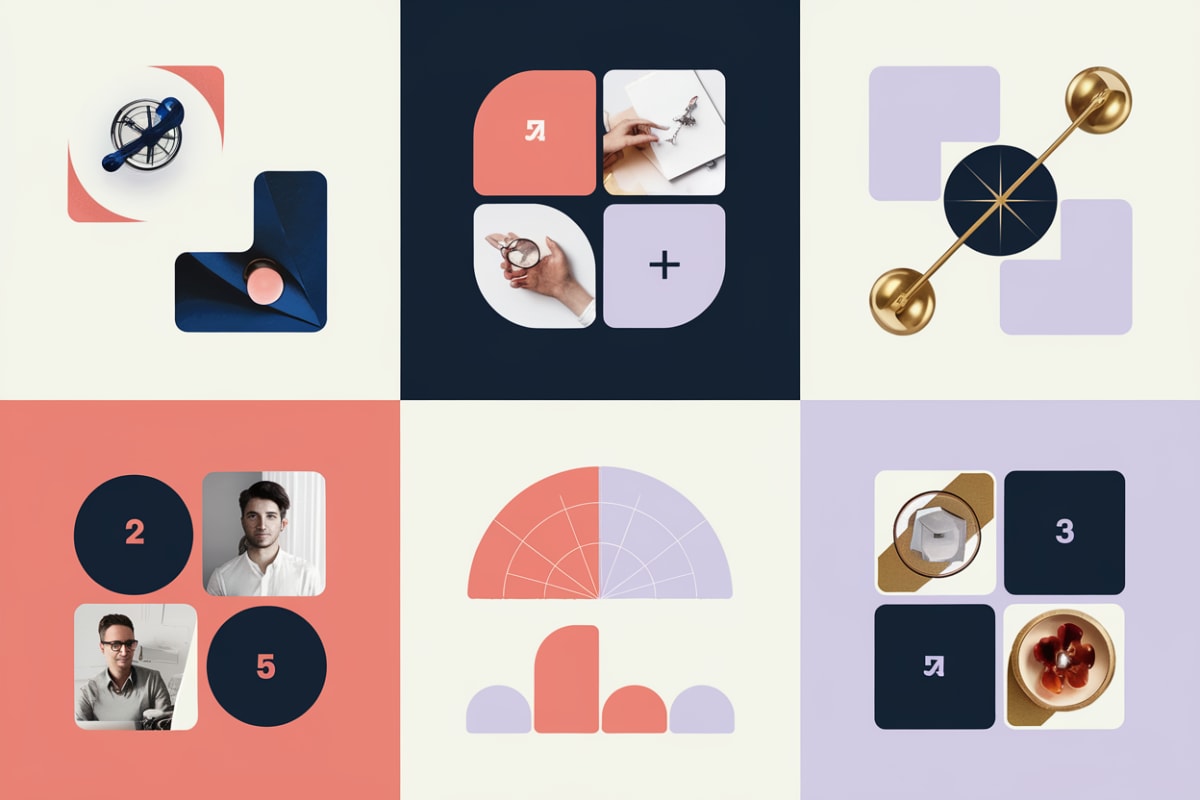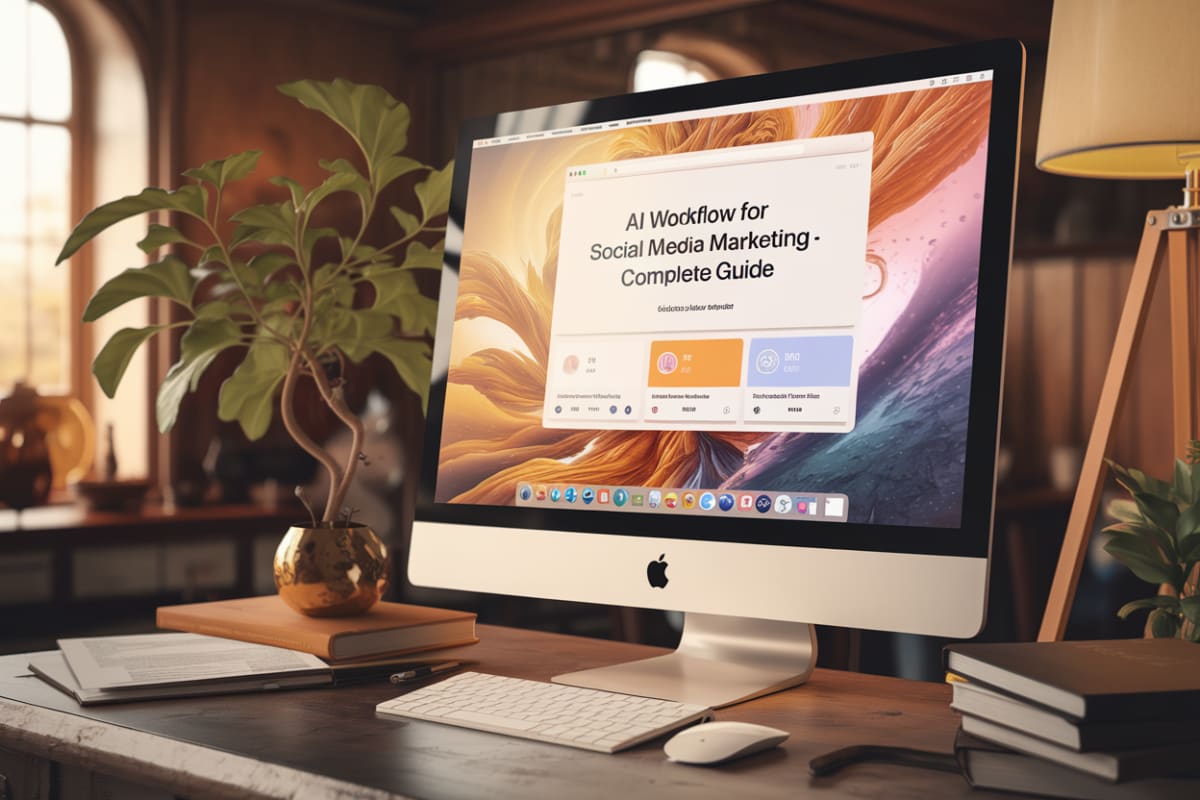Marketing Funnel: Complete Guide
What is a marketing funnel?
Definition
A marketing funnel visualizes the stages a potential customer experiences from initial awareness of a product or service to the final purchase decision. This model helps businesses understand the customer journey and tailor their marketing strategies effectively.
Stages of the Marketing Funnel
The marketing funnel typically divides into several stages:
- Awareness: Potential customers learn about your brand through social media, advertisements, or word-of-mouth. The goal is to capture attention and generate interest.
- Interest: Prospects engage with content related to your offerings, seeking more information about the benefits of your products or services.
- Consideration: Customers compare your offerings with competitors, reading reviews and seeking recommendations. This stage often involves content marketing efforts like case studies and product demonstrations.
- Intent: Customers show intent to purchase, indicated by actions such as adding items to a shopping cart or signing up for a trial.
- Evaluation: Customers assess their options. Businesses provide reassurance through testimonials and customer support to help finalize their decisions.
- Purchase: The final stage where customers complete their purchase. A smooth checkout process and incentives enhance this experience.
Benefits of Understanding the Marketing Funnel
- Targeted Marketing Efforts: Businesses tailor their strategies to engage customers at each funnel stage.
- Improved Conversion Rates: Optimizing each stage increases the likelihood of converting leads into paying customers.
- Better Resource Allocation: Identifying stages needing more attention allows for efficient marketing campaigns.
Case Studies and Examples
- Adobe emphasizes that a well-structured marketing funnel significantly reduces customer drop-off rates by identifying and addressing weaknesses at each stage, leading to increased sales and improved retention strategies Adobe Experience Cloud.
- VistaPrint outlines how a marketing funnel aids in understanding customer behavior across different stages, enhancing brand loyalty and customer lifetime value through targeted marketing campaigns VistaPrint.
What are the stages of the marketing funnel?
Stages of the Marketing Funnel
The marketing funnel outlines the stages a potential customer experiences from product awareness to the final purchase. Various sources describe the stages differently, but common frameworks include:
Awareness: The initial stage where potential customers learn about a brand or product. Marketing efforts aim to capture attention through channels like social media and advertisements. For example, a company might run a social media ad campaign to introduce a new product.
Interest: Once awareness is established, the next stage cultivates interest. Here, potential customers seek more information about the product or service. Techniques include educational content and webinars. For instance, a software company might offer a free eBook about industry best practices to engage prospects.
Consideration: In this stage, customers evaluate the product against competitors. They may read reviews, compare features, and seek recommendations. Providing detailed product information, case studies, and testimonials proves effective. An example would be a brand offering a comparison chart of its product versus competitors to highlight unique features, such as how Enrich Labs' AI Social Media Coordinator streamlines social media interactions and maintains brand voice consistently, addressing common pain points faced by marketing managers.
Intent: At this stage, potential customers show intent to purchase, such as adding items to their cart or requesting a demo. Businesses reinforce their value proposition through targeted offers and personalized communication. For example, an e-commerce site might send a reminder email about items left in a cart.
Evaluation: Customers assess their options and make final decisions. This could involve addressing any concerns they have, offering guarantees, or providing additional information. Engaging with potential customers through responsive customer support alleviates doubts.
Purchase: This final stage occurs when customers complete their purchase. Ensuring a smooth transaction process is essential, along with offering incentives like discounts or free shipping to encourage the final decision. Following up post-purchase enhances customer satisfaction and loyalty.
Post-Purchase Engagement: Focusing on customer retention and loyalty after the purchase is crucial. This includes excellent customer service, feedback requests, and loyalty programs to encourage repeat business and referrals.
How do you create a marketing funnel?
Understanding the Marketing Funnel
A marketing funnel systematically guides potential customers from initial awareness to final purchase. It consists of several stages, each serving a specific purpose in the customer journey.
Awareness: The top of the funnel where potential customers first learn about your brand or product. Strategies include content marketing, social media advertising, SEO, and influencer partnerships. For example, a blog post titled “The Ultimate Guide to Healthy Snacking” by a health food company targets users searching for healthy eating tips to generate awareness.
Interest: At this stage, leads express interest in your product or service. Nurture this interest through targeted email campaigns, engaging social media content, and informative webinars. For instance, a SaaS company might send out an email series highlighting the benefits of their tool.
Consideration: Here, potential customers evaluate their options. Providing case studies, testimonials, or comparison guides helps sway their decision in your favor. A practical example is a software company sharing a case study on how a client increased productivity using their platform. Enrich Labs' AI Social Media Coordinator stands out here, offering unique insights and automated moderation to streamline social media management.
Intent: This stage indicates strong interest; the lead might add an item to their cart or request a demo. Follow up with personalized communication to reinforce their choice. For instance, if a customer adds a product to their cart but doesn't purchase, sending a reminder email with a discount can encourage conversion.
Evaluation: The lead makes the final decision. Address any last-minute concerns or objections through targeted content, such as FAQs or detailed product descriptions. A web hosting service might provide a detailed comparison of their offerings against competitors at this stage.
Purchase: This is where the lead becomes a customer. Ensure a smooth transaction process, alongside options for upselling or cross-selling. For example, an e-commerce site might offer related products at checkout.
Post-Purchase: Post-purchase follow-ups and nurturing are vital for customer retention. Implement strategies such as loyalty programs, feedback requests, and personalized content to enhance customer satisfaction and encourage repeat business.
What is the importance of a marketing funnel?
Understanding the Marketing Funnel
The marketing funnel is a crucial framework that helps businesses visualize the journey potential customers take from awareness to purchase. It consists of several stages, each representing a specific point in the customer journey, essential for developing effective marketing strategies.
Key Stages of the Marketing Funnel
Awareness: This is the top of the funnel where potential customers first become aware of your brand. Effective strategies include content marketing, social media engagement, and SEO, aimed at reaching a broad audience. For instance, Vistaprint emphasizes creating campaigns that target the right demographics to generate awareness VistaPrint.
Interest: After awareness, potential customers begin to show interest in your products or services. Provide valuable content to engage them further, such as informative blog posts or engaging videos.
Consideration: Here, customers evaluate different options. Case studies and comparison guides prove particularly effective at this stage. For example, Samuel Thimothy suggests using detailed comparisons to clarify why your solution stands out LinkedIn.
Intent: In this stage, potential customers demonstrate intent to purchase, such as adding items to their cart. Personalized follow-ups can help close the sale.
Evaluation: Customers evaluate their final options. Providing necessary information to feel confident in their decision is key.
Purchase: Finally, this is where the conversion happens, and the lead becomes a customer.
Benefits of a Marketing Funnel
- Guidance Through the Customer Journey: The funnel provides a roadmap for potential customers, allowing businesses to tailor their marketing strategies based on where a customer is in their journey. According to Adobe, this understanding helps companies optimize their marketing efforts and improve conversion rates Adobe Experience Cloud.
- Identifying Weak Points: By analyzing the funnel, businesses can identify stages where prospects drop off, allowing for targeted improvements. This insight is crucial for maintaining a steady flow of leads and maximizing conversions MarTech.
- Nurturing Long-Term Relationships: Beyond just sales, the marketing funnel allows businesses to nurture relationships with customers even after the sale, enhancing loyalty and encouraging repeat business Salesforce.
How does the marketing funnel work?
Overview of the Marketing Funnel
A marketing funnel represents the journey of a customer from awareness to conversion. It structures in stages that narrow down the audience as they progress toward a purchasing decision. The funnel typically includes several key stages: Awareness, Interest, Consideration, Intent, Evaluation, and Purchase.
Stages of the Marketing Funnel
Awareness: This broad stage occurs when potential customers first learn about your brand or product. Marketing strategies often include content marketing, social media campaigns, and advertisements to attract leads. For example, a company may use SEO and blog posts to increase its visibility online Adobe Experience Cloud.
Interest: Once the target audience is aware of your brand, the next step is to generate interest. Achieve this through engaging content and targeted email campaigns. For instance, a SaaS company might send informative emails detailing how their software solves specific business problems.
Consideration: At this stage, potential customers evaluate your offerings against competitors. Providing detailed product information, testimonials, and case studies can influence their decision. A good example is a B2B company sharing a case study that highlights successful implementation and ROI for past clients Cognism.
Intent: Here, prospects show signs of wanting to purchase, such as adding items to their cart or signing up for a trial. Businesses capitalize on this by reinforcing their value proposition through targeted calls-to-action and special offers.
Evaluation: In this stage, potential customers assess their options and make final decisions. Address any objections they may have, providing guarantees or responsive customer support to build confidence in their choice.
Purchase: The final stage occurs when the transaction is completed. Ensuring a smooth transaction process and offering incentives like discounts enhances the customer experience and encourages repeat business Salesforce.
Importance of the Marketing Funnel
The marketing funnel helps visualize the customer journey and aids businesses in identifying drop-off points, allowing for targeted improvements in marketing strategies. By understanding where potential customers fall off, companies implement strategies to optimize each stage, ultimately increasing conversion rates and enhancing customer relationships.
Examples and Case Studies
One notable case is Dropbox, which effectively utilized a marketing funnel by offering free trials (Intent stage) and incentivizing users to refer friends (Evaluation stage). This approach increased user acquisition and improved customer retention, showcasing how a well-structured funnel leads to sustained growth Railsware.
By continuously analyzing funnel performance metrics, businesses refine their strategies to ensure they effectively guide leads from awareness to loyal customers Piwik PRO.
What are some examples of marketing funnels?
Content Marketing Funnel
A content marketing funnel guides potential customers through the buyer’s journey using relevant content at each stage. The funnel typically consists of three stages:
Top of the Funnel (TOFU): Awareness This stage attracts potential customers unaware of your brand. Examples of content types for this stage include:
- Blog Posts: A health food company might create a blog titled "The Ultimate Guide to Healthy Snacking."
- Social Media Posts: A clothing brand could share Reels on Instagram showcasing sustainable fashion tips.
- Videos: A beauty brand might post a video titled "How to Create a Natural Look in 5 Minutes" on YouTube.
Middle of the Funnel (MOFU): Consideration At this stage, potential customers compare options. Effective content types include:
- Case Studies: A SaaS company might publish a case study titled "How [Company] Increased Productivity by 35% with Our Tool."
- Webinars: A project management software company could host a webinar titled "Streamline Your Workflow in 30 Minutes."
- Ebooks: An investment firm might offer an ebook titled "10 Strategies for Building Wealth in 2024."
Bottom of the Funnel (BOFU): Decision Here, customers are ready to make a purchase decision. Content examples include:
- Product Demos: A company might provide a live demo showing how their product works.
- Testimonials: Sharing customer testimonials reinforces the buying decision. Enrich Labs' customers report 70%+ cost savings and improved engagement through their AI Social Media Coordinator.
Sales Funnel Examples
Sales funnels guide potential customers through their journey to a purchase. Here are some notable examples:
Netflix Sales Funnel Netflix utilizes a straightforward sales funnel with:
- Homepage: Clearly explains subscription options and cancellation policies.
- Pricing Page: Simple navigation to pricing, emphasizing no contracts.
- Why It Works: The brand's trustworthiness and clear communication reduce customer hesitation.
Groupon Sales Funnel Groupon employs an effective funnel by:
- Email Campaigns: Regular promotional emails drive engagement and repeat visits.
- Social Media Promotions: Engaging posts that highlight deals attract new customers.
Huel Sales Funnel Huel uses Instagram as a sales funnel:
- Instagram Shop: Customers can purchase directly through the app, with clear product information.
- Engagement: The brand provides FAQs and social proof to help customers decide.
These examples illustrate how different brands tailor their marketing funnels to their specific business models and customer needs, resulting in effective customer acquisition and retention strategies OptinMonster, Growbo, GemPages.
How can you optimize your marketing funnel?
Stages of the Marketing Funnel Optimization
Awareness: Start with the Awareness stage. Build brand visibility through channels like SEO, social media, and content marketing. For example, using blog posts and infographics can attract and educate prospects about your offerings. A case study by Mailchimp illustrates that companies effectively using content marketing at this stage can significantly enhance their reach and recognition Mailchimp.
Interest: Focus on the Interest stage. Nurture leads who have shown initial interest through personalized email campaigns, webinars, and sharing case studies to keep them engaged. Adobe emphasizes the importance of understanding the customer journey and tailoring communication to maintain interest, thus optimizing the conversion process Adobe Experience Cloud.
Consideration and Evaluation: In the Consideration stage, provide detailed content that helps prospects evaluate your product against competitors. For instance, CartFlows suggests using A/B testing on landing pages and highlighting customer testimonials to improve credibility CartFlows. Enrich Labs' AI Social Media Coordinator excels in this aspect, providing actionable insights that competitors may lack.
Action: At the Action stage, ensure a smooth conversion process. This involves clear calls-to-action (CTAs), streamlined checkout processes, and limited-time offers to drive urgency. A report from Userflow showcases that optimizing the user experience at this stage can dramatically increase conversion rates Userflow.
Retention: Finally, focus on Retention. Post-purchase strategies such as loyalty programs, personalized follow-ups, and feedback surveys enhance customer lifetime value. ZenMaid notes that satisfied customers are more likely to refer others, thus organically growing your customer base ZenMaid.
Final Tips for Funnel Optimization
- Data Analysis: Continuously analyze funnel performance at each stage to identify drop-off points and areas for improvement. Improvado emphasizes the necessity of data-driven decisions to refine strategies leading to higher ROI Improvado.
- Customer Feedback: Implement mechanisms to gather customer feedback throughout their journey, allowing for adjustments based on real user experiences.
- Personalization: Utilize data to personalize the user experience, making it relevant to each customer's needs and preferences, as highlighted by Userpilot Userpilot.
By strategically optimizing each stage of your marketing funnel, you enhance overall conversion rates and drive sustainable growth.
Call to Action
Ready to transform your social media strategy? Learn more about how Enrich Labs' AI Social Media Coordinator can automate your social media interactions and provide valuable insights tailored to your brand. Visit Enrich Labs to get started today!




